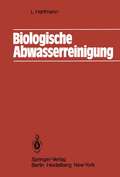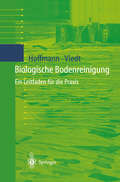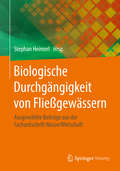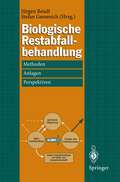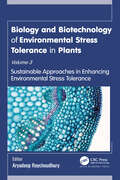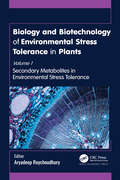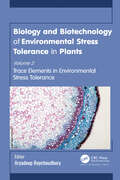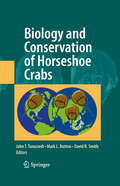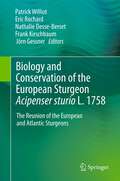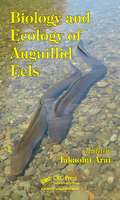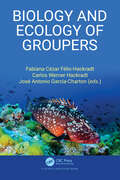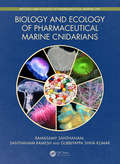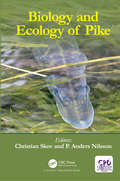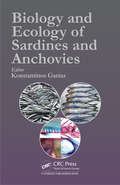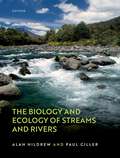- Table View
- List View
Biological Weathering (large print)
by RnibThis page shows two images of a rock and a plant. There is a locator dot shown, which will be at the top left when the image is the correct way up. The image surrounded by a dashed line image border. The rock on the left has a small crack in its top. Some moisture has collected there and a tree seed has germinated into a small plant with three leaves. Its roots are starting to invade the rock. On the right of the page the rock has been split in two by the tree which is starting to get quite big. Its roots over time have forced the rock apart. The roots have reached the soil beneath the rock and are spreading through the soil. The soil is shown in cross section so the roots can be found.
Biological Weathering (UEB contracted)
by RnibThis page shows two images of a rock and a plant. There is a locator dot shown, which will be at the top left when the image is the correct way up. The image surrounded by a dashed line image border. The rock on the left has a small crack in its top. Some moisture has collected there and a tree seed has germinated into a small plant with three leaves. Its roots are starting to invade the rock. On the right of the page the rock has been split in two by the tree which is starting to get quite big. Its roots over time have forced the rock apart. The roots have reached the soil beneath the rock and are spreading through the soil. The soil is shown in cross section so the roots can be found.
Biological Weathering (UEB uncontracted)
by RnibThis page shows two images of a rock and a plant. There is a locator dot shown, which will be at the top left when the image is the correct way up. The image surrounded by a dashed line image border. The rock on the left has a small crack in its top. Some moisture has collected there and a tree seed has germinated into a small plant with three leaves. Its roots are starting to invade the rock. On the right of the page the rock has been split in two by the tree which is starting to get quite big. Its roots over time have forced the rock apart. The roots have reached the soil beneath the rock and are spreading through the soil. The soil is shown in cross section so the roots can be found.
Biologically Inspired Physics (Nato Science Series B: #263)
by L. PelitiThe workshop "Biologically Inspired Physics" was organized, with the support of the NATO Scientific Affairs Division and the Directorate-General for Science, Research and Development of the Commission of the European Communities, in order to review some subjects of physics of condensed matter which are inspired by biological problems or deal with biological systems, but which address physical questions. The main topics discussed in the meeting were: 1. Macromolecules: In particular, proteins and nucleic acids. Special emphasis was placed on modelling protein folding, where analogies with disordered systems in con densed matter (glasses, spin glasses) were suggested. It is not clear at this point whether such analogies will help in solving the folding problem. Interesting problems in nucleic acids (in particular DNA) deal with the dynamics of semiflexible chains with torsion and the relationship between topology and local structure. They arise from such biological problems as DNA packing or supercoiling. 2. Membranes: This field has witnessed recent progress in the understanding of the statistical mechanics of fluctuating flexible sheets, such as lipid bilayers. It appears that one is close to understanding shape fluctuations in red blood cells on a molec ular basis. Open problems arise from phenomena such as budding or membrane fusion. Experiments on model systems, such as vesicle systems or artificial lipids, have great potential. Phenomena occurring inside the membrane (protein diffusion, ionic pumps) were only discussed briefly.
Biologische Durchgängigkeit von Fließgewässern: Ausgewählte Beiträge aus der Fachzeitschrift WasserWirtschaft
by Stephan HeimerlDieser Band widmet sich der interdisziplinären Aufgabe eines Einklangs zwischen verschiedenen zivilisatorischen Ansprüchen und der biologischen sowie ökologischen Funktionalität von Fließgewässern.
Biologische Restabfallbehandlung: Methoden, Anlagen und Perspektiven
by Jürgen Beudt Stefan GessenichBiology and Biotechnology of Environmental Stress Tolerance in Plants: Volume 3: Sustainable Approaches for Enhancing Environmental Stress Tolerance
by Aryadeep RoychoudhuryAbiotic stresses such as drought, high salt, cold, heat, UV radiation, heavy metal pollution, etc., are increasingly responsible for restricting plant growth and agricultural production and are becoming more alarming due to threats from global climate change. To combat these threats, this new 3-volume set provides a comprehensive understanding of the mechanisms that mediate biosynthesis, accumulation, and degradation of plant metabolites to improve crop production and enhance abiotic stress tolerance in plants. Volume 1: Secondary Metabolites in Environmental Stress Tolerance focuses exclusively on the diverse secondary metabolites that play a major role in the adaptation of plants to the environment and in overcoming stress conditions as well as their implications for enhancing tolerance mechanisms. The book presents information on the protective role rendered by a wide array of antioxidative secondary metabolites and their regulation during diverse environmental stress. Volume 2: Trace Elements in Environmental Stress Tolerance throws light on the different inorganic trace elements, including metal nanoparticles, that help to deal with environmental stresses. While these elements at high level create considerable phytotoxicity and halt metabolic and enzymatic activity, they also promote growth and development in limited quantity, so that they have significant potential in revamping plant morphology and physiology under stressed conditions. Hence, optimum concentration management of these elements can help to mitigate world hunger and contribute toward sustainable agriculture and food security under challenging environments. Volume 3: Sustainable Approaches for Enhancing Environmental Stress Tolerance focuses on the agronomic and biochemical approaches as well as biotechnological and high-throughput technologies, including the prospects of genetic engineering, epigenetics and the latest CRISPR/Cas technology, in generating stress-tolerant plants. The volume provides a clear roadmap for the implementation of techniques for improving abiotic stress tolerance in plants for better sustenance.
Biology and Biotechnology of Environmental Stress Tolerance in Plants: Volume 1: Secondary Metabolites in Environmental Stress Tolerance
by Aryadeep RoychoudhuryAbiotic stresses such as drought, high salt, cold, heat, UV radiation, heavy metal pollution, etc., are increasingly responsible for restricting plant growth and agricultural production and are becoming more alarming due to threats from global climate change. To combat these threats, this new 3-volume set provides a comprehensive understanding of the mechanisms that mediate biosynthesis, accumulation, and degradation of plant metabolites to improve crop production and enhance abiotic stress tolerance in plants. Volume 1: Secondary Metabolites in Environmental Stress Tolerance focuses exclusively on the diverse secondary metabolites that play a major role in the adaptation of plants to the environment and in overcoming stress conditions as well as their implications for enhancing tolerance mechanisms. The book presents available information on the protective roles rendered by a wide array of antioxidative secondary metabolites and their regulation during diverse environmental stress. Volume 2: Trace Elements in Environmental Stress Tolerance throws light on the different inorganic trace elements, including metal nanoparticles, that help to deal with environmental stresses. While these elements at high level create considerable phytotoxicity and halt metabolic and enzymatic activity, they also promote growth and development in limited quantity, so that they have significant potential in revamping plant morphology and physiology under stressed conditions. Hence, optimum concentration management of these elements can help to mitigate world hunger and contribute toward sustainable agriculture and food security under challenging environments. Volume 3: Sustainable Approaches for Enhancing Environmental Stress Tolerance focuses on the agronomic and biochemical approaches as well as biotechnological and high-throughput technologies, including the prospects of genetic engineering, epigenetics and the latest CRISPR/Cas technology, in generating stress-tolerant plants. The volume provides a clear roadmap for the implementation of techniques for improving abiotic stress tolerance in plants for better sustenance.
Biology and Biotechnology of Environmental Stress Tolerance in Plants: Volume 2: Trace Elements in Environmental Stress Tolerance
by Aryadeep RoychoudhuryAbiotic stresses such as drought, high salt, cold, heat, UV radiation, heavy metal pollution, etc., are increasingly responsible for restricting plant growth and agricultural production and are becoming more alarming due to threats from global climate change. To combat these threats, this new 3-volume set provides a comprehensive understanding of the mechanisms that mediate biosynthesis, accumulation, and degradation of plant metabolites to improve crop production and enhance abiotic stress tolerance in plants. Volume 1: Secondary Metabolites in Environmental Stress Tolerance focuses exclusively on the diverse secondary metabolites that play a major role in the adaptation of plants to the environment and in overcoming stress conditions as well as their implications in enhancing tolerance mechanisms. The book presents information on the protective roles rendered by a wide array of antioxidative secondary metabolites and their regulation during diverse environmental stress. Volume 2: Trace Elements in Environmental Stress Tolerance throws light on the different inorganic trace elements, including metal nanoparticles, that help to deal with various environmental stresses. While these elements at high level create considerable phytotoxicity and halt metabolic and enzymatic activity, they also promote growth and development in limited quantity, so that they have significant potential in revamping plant morphology and physiology under stressed conditions. Hence, optimum concentration management of these elements can help to mitigate world hunger and contribute toward sustainable agriculture and food security under challenging environments. Volume 3: Sustainable Approaches for Enhancing Environmental Stress Tolerance focuses on agronomic and biochemical approaches as well as biotechnological and high-throughput technologies, including the prospects of genetic engineering, epigenetics and the latest CRISPR/Cas technology in generating stress-tolerant plants. The volume provides a clear roadmap for the implementation of techniques for improving abiotic stress tolerance in plants for better sustenance.
Biology and Biotechnology of Environmental Stress Tolerance in Plants: Volume 3: Sustainable Approaches for Enhancing Environmental Stress Tolerance
Abiotic stresses such as drought, high salt, cold, heat, UV radiation, heavy metal pollution, etc., are increasingly responsible for restricting plant growth and agricultural production and are becoming more alarming due to threats from global climate change. To combat these threats, this new 3-volume set provides a comprehensive understanding of the mechanisms that mediate biosynthesis, accumulation, and degradation of plant metabolites to improve crop production and enhance abiotic stress tolerance in plants. Volume 1: Secondary Metabolites in Environmental Stress Tolerance focuses exclusively on the diverse secondary metabolites that play a major role in the adaptation of plants to the environment and in overcoming stress conditions as well as their implications for enhancing tolerance mechanisms. The book presents information on the protective role rendered by a wide array of antioxidative secondary metabolites and their regulation during diverse environmental stress. Volume 2: Trace Elements in Environmental Stress Tolerance throws light on the different inorganic trace elements, including metal nanoparticles, that help to deal with environmental stresses. While these elements at high level create considerable phytotoxicity and halt metabolic and enzymatic activity, they also promote growth and development in limited quantity, so that they have significant potential in revamping plant morphology and physiology under stressed conditions. Hence, optimum concentration management of these elements can help to mitigate world hunger and contribute toward sustainable agriculture and food security under challenging environments. Volume 3: Sustainable Approaches for Enhancing Environmental Stress Tolerance focuses on the agronomic and biochemical approaches as well as biotechnological and high-throughput technologies, including the prospects of genetic engineering, epigenetics and the latest CRISPR/Cas technology, in generating stress-tolerant plants. The volume provides a clear roadmap for the implementation of techniques for improving abiotic stress tolerance in plants for better sustenance.
Biology and Biotechnology of Environmental Stress Tolerance in Plants: Volume 1: Secondary Metabolites in Environmental Stress Tolerance
Abiotic stresses such as drought, high salt, cold, heat, UV radiation, heavy metal pollution, etc., are increasingly responsible for restricting plant growth and agricultural production and are becoming more alarming due to threats from global climate change. To combat these threats, this new 3-volume set provides a comprehensive understanding of the mechanisms that mediate biosynthesis, accumulation, and degradation of plant metabolites to improve crop production and enhance abiotic stress tolerance in plants. Volume 1: Secondary Metabolites in Environmental Stress Tolerance focuses exclusively on the diverse secondary metabolites that play a major role in the adaptation of plants to the environment and in overcoming stress conditions as well as their implications for enhancing tolerance mechanisms. The book presents available information on the protective roles rendered by a wide array of antioxidative secondary metabolites and their regulation during diverse environmental stress. Volume 2: Trace Elements in Environmental Stress Tolerance throws light on the different inorganic trace elements, including metal nanoparticles, that help to deal with environmental stresses. While these elements at high level create considerable phytotoxicity and halt metabolic and enzymatic activity, they also promote growth and development in limited quantity, so that they have significant potential in revamping plant morphology and physiology under stressed conditions. Hence, optimum concentration management of these elements can help to mitigate world hunger and contribute toward sustainable agriculture and food security under challenging environments. Volume 3: Sustainable Approaches for Enhancing Environmental Stress Tolerance focuses on the agronomic and biochemical approaches as well as biotechnological and high-throughput technologies, including the prospects of genetic engineering, epigenetics and the latest CRISPR/Cas technology, in generating stress-tolerant plants. The volume provides a clear roadmap for the implementation of techniques for improving abiotic stress tolerance in plants for better sustenance.
Biology and Biotechnology of Environmental Stress Tolerance in Plants: Volume 2: Trace Elements in Environmental Stress Tolerance
Abiotic stresses such as drought, high salt, cold, heat, UV radiation, heavy metal pollution, etc., are increasingly responsible for restricting plant growth and agricultural production and are becoming more alarming due to threats from global climate change. To combat these threats, this new 3-volume set provides a comprehensive understanding of the mechanisms that mediate biosynthesis, accumulation, and degradation of plant metabolites to improve crop production and enhance abiotic stress tolerance in plants. Volume 1: Secondary Metabolites in Environmental Stress Tolerance focuses exclusively on the diverse secondary metabolites that play a major role in the adaptation of plants to the environment and in overcoming stress conditions as well as their implications in enhancing tolerance mechanisms. The book presents information on the protective roles rendered by a wide array of antioxidative secondary metabolites and their regulation during diverse environmental stress. Volume 2: Trace Elements in Environmental Stress Tolerance throws light on the different inorganic trace elements, including metal nanoparticles, that help to deal with various environmental stresses. While these elements at high level create considerable phytotoxicity and halt metabolic and enzymatic activity, they also promote growth and development in limited quantity, so that they have significant potential in revamping plant morphology and physiology under stressed conditions. Hence, optimum concentration management of these elements can help to mitigate world hunger and contribute toward sustainable agriculture and food security under challenging environments. Volume 3: Sustainable Approaches for Enhancing Environmental Stress Tolerance focuses on agronomic and biochemical approaches as well as biotechnological and high-throughput technologies, including the prospects of genetic engineering, epigenetics and the latest CRISPR/Cas technology in generating stress-tolerant plants. The volume provides a clear roadmap for the implementation of techniques for improving abiotic stress tolerance in plants for better sustenance.
Biology and Conservation of Horseshoe Crabs
by David Smith Mark L. Botton John T. TanacrediHorseshoe crabs, those mysterious ancient mariners, lured me into the sea as a child along the beaches of New Jersey. Drawn to their shiny domed shells and spiked tails, I could not resist picking them up, turning them over and watching the wondrous mechanical movement of their glistening legs, articulating with one another as smoothly as the inner working of a clock. What was it like to be a horseshoe crab, I wondered? What did they eat? Did they always move around together? Why were some so large and others much smaller? How old were they, anyway? What must it feel like to live underwater? What else was out there, down there, in the cool, green depths that gave rise to such intriguing creatures? The only way to find out, I reasoned, would be to go into the ocean and see for myself, and so I did, and more than 60 years later, I still do.
Biology and Conservation of the European Sturgeon Acipenser sturio L. 1758: The Reunion of the European and Atlantic Sturgeons
by Patrick Williot, Eric Rochard, Nathalie Desse-Berset, Frank Kirschbaum and Jörn GessnerThe book aims at synthesizing our current knowledge of Acipenser sturio and its management. This species, one of the most widespread sturgeon species all over Western Europe ranging from the Black Sea to the Baltic, is now on the verge of extinction. Major aspects of its biology and management, including mismanagement, are provided in a historic perspective. Similarly, the changes in the restoration programs (in situ and ex situ) initiated in France and Germany are presented. As the species occurred in sympatry with Acipenser oxyrinchus in Germany and Poland and very recently in France as well, a brief outlook on restoration-management programs of A. oxyrinchus are also provided for both North America and Northern European countries, namely Germany and Poland. As conservation-restoration actions go beyond scientific issues, non-governmental stakeholders and marine professional fishermen’s organizations have also been asked to contribute, and the key role of a French-German cooperation plan is underlined. A part of the book is devoted to perspectives. Illustrations of the European sturgeon, mainly in photographs, but also in stamps and paintings, are presented.
Biology and Ecology of Anguillid Eels
by Takaomi AraiAnguillid eels have fascinated biologists for centuries due to their spectacular long-distance migrations between freshwater habitats and their spawning areas far out in the ocean. This book provides a long overdue update on the biology and ecology of anguillid eels and features comprehensive coverage of the key features of the genus Anguilla. It c
Biology and Ecology of Groupers
by Fabiana Cézar Félix-HackradtGroupers are fascinating charismatic fishes commonly found in reef habitats around the world that sustain a global multimillionaire fishery. They are an important top predator species and therefore of paramount ecological importance for reef systems' resilience. The book, Biology and Ecology of Groupers is an up-to-date review of the main bio-ecological topics involving worldwide groupers species oriented to the academic community and managers. It covers aspects of classification and phylogenetic relationships, geographical distribution, and life history related characteristics (Section I), including the major threats of groupers populations, case studies of successful management and comments about the future of groupers in our changing world (Section II).
Biology and Ecology of Groupers
by Fabiana Cézar Félix-Hackradt Carlos Werner Hackradt José Antonio García-ChartonGroupers are fascinating charismatic fishes commonly found in reef habitats around the world that sustain a global multimillionaire fishery. They are an important top predator species and therefore of paramount ecological importance for reef systems' resilience. The book, Biology and Ecology of Groupers is an up-to-date review of the main bio-ecological topics involving worldwide groupers species oriented to the academic community and managers. It covers aspects of classification and phylogenetic relationships, geographical distribution, and life history related characteristics (Section I), including the major threats of groupers populations, case studies of successful management and comments about the future of groupers in our changing world (Section II).
Biology and Ecology of Pharmaceutical Marine Cnidarians (Biology and Ecology of Marine Life)
by Ramasamy Santhanam Santhanam Ramesh Gubbiyappa Shiva KumarThe first comprehensive book on the biology and ecology of pharmaceutical cnidarians, answering a need for more knowledge about the identification, biology, natural products and bioactivities of these living resources. Contributed by scientists of both marine biology and pharmacy disciplines. Identifies the correct marine species, shows the ecological parameters of that species, and explores its biological values with particular attention to primary and secondary metabolites or bioactive constituents. A useful supplementary text on Marine Biology and Pharmacology courses. Nearly 200 illustrations are produced in full color, providing a high-quality reference. This book provides the taxonomy, common name, global distribution, habitat, diagnostic features, and pharmaceutical compounds (along with their activities) of 200 species of marine cnidarians along with nearly 200 detailed illustrations in glorious color. The phylum Cnidaria (formerly Coelenterata) is a large, diverse, and ecologically important group of marine invertebrates which make up 40 percent of the biomass of the oceans. Marine invertebrates are the richest source of marine natural products with potential applications in the pharmaceutical and medical sectors, and it has been reported that over 3000 bioactive compounds have been described from this phylum alone, mostly in the last decade.
Biology and Ecology of Pharmaceutical Marine Cnidarians (Biology and Ecology of Marine Life)
by Ramasamy Santhanam Santhanam Ramesh Gubbiyappa Shiva KumarThe first comprehensive book on the biology and ecology of pharmaceutical cnidarians, answering a need for more knowledge about the identification, biology, natural products and bioactivities of these living resources. Contributed by scientists of both marine biology and pharmacy disciplines. Identifies the correct marine species, shows the ecological parameters of that species, and explores its biological values with particular attention to primary and secondary metabolites or bioactive constituents. A useful supplementary text on Marine Biology and Pharmacology courses. Nearly 200 illustrations are produced in full color, providing a high-quality reference. This book provides the taxonomy, common name, global distribution, habitat, diagnostic features, and pharmaceutical compounds (along with their activities) of 200 species of marine cnidarians along with nearly 200 detailed illustrations in glorious color. The phylum Cnidaria (formerly Coelenterata) is a large, diverse, and ecologically important group of marine invertebrates which make up 40 percent of the biomass of the oceans. Marine invertebrates are the richest source of marine natural products with potential applications in the pharmaceutical and medical sectors, and it has been reported that over 3000 bioactive compounds have been described from this phylum alone, mostly in the last decade.
Biology and Ecology of Pike
by Anders Nilsson P. Anders NilssonThis book sets out to bridge the order scales among pike researchers, populations, communities, management, and fisheries. It emphasizes the progress of pike research during the last two decades, during which the order-bridging approach emerged. This framework underpins the text and the message, to convey its importance to pike research and to fish research in general. In addition, a considerable part of the book is devoted to management implications and highlights aspects of human dimensions in recreational fisheries.
Biology and Ecology of Pike
by Christian Skov P. Anders NilssonThis book sets out to bridge the order scales among pike researchers, populations, communities, management, and fisheries. It emphasizes the progress of pike research during the last two decades, during which the order-bridging approach emerged. This framework underpins the text and the message, to convey its importance to pike research and to fish research in general. In addition, a considerable part of the book is devoted to management implications and highlights aspects of human dimensions in recreational fisheries.
Biology and Ecology of Sardines and Anchovies
by Konstantinos GaniasApart from being commercially and socially significant, anchovies and sardines populations occupy crucial positions in the oceans' ecosystems. Low in the food chain, clupeoids tend towards abundance, as if their purpose in life was to be eaten and fuel the upper levels of marine trophic chains. The present book covers a broad spectrum of topics on
The Biology and Ecology of Streams and Rivers
by Alan Hildrew Paul GillerThe challenges that the world's running water systems now face have never been more numerous or acute; at the same time, these complex habitats remain absolutely crucial to human wellbeing and future survival. If rivers can ever be anything like sustainable, ecology needs to take its place as an equal among the physical sciences such as hydrology and geomorphology. A real understanding of the natural history and ecology of running waters must now be brought even more prominently into river management. The primary purpose of this textbook is to provide the up-to-date overview that students and practitioners will require to achieve this aim. The book's unifying focus is on rivers and streams as ecosystems in which the particular identity of organisms is not the main emphasis but rather the processes in which they are involved - specifically energy flow and the cycling of materials. It builds on the physicochemical foundations of the habitat templet and explores the diversity and adaptations of the biota, progressing from the population and community ecology of organisms and linking them to ecosystem processes and services in the wider biosphere via the complexities of species interactions and food webs. These include water quality and patterns of river discharge, as well as aesthetics, waste disposal, and environmental health. While the book is not primarily focused on application per se, each chapter addresses how humans affect rivers and, in turn, are affected by them. A final, future-oriented chapter identifies key strategic areas and sets a roadmap for integrating knowledge of natural history and ecology into policy and management. The Biology and Ecology of Streams and Rivers is an accessible text suitable for both senior undergraduate and graduate students taking courses in both lotic and general ecology as well as more established researchers, practitioners, managers, and conservationists requiring a concise and contemporary overview of running waters.


